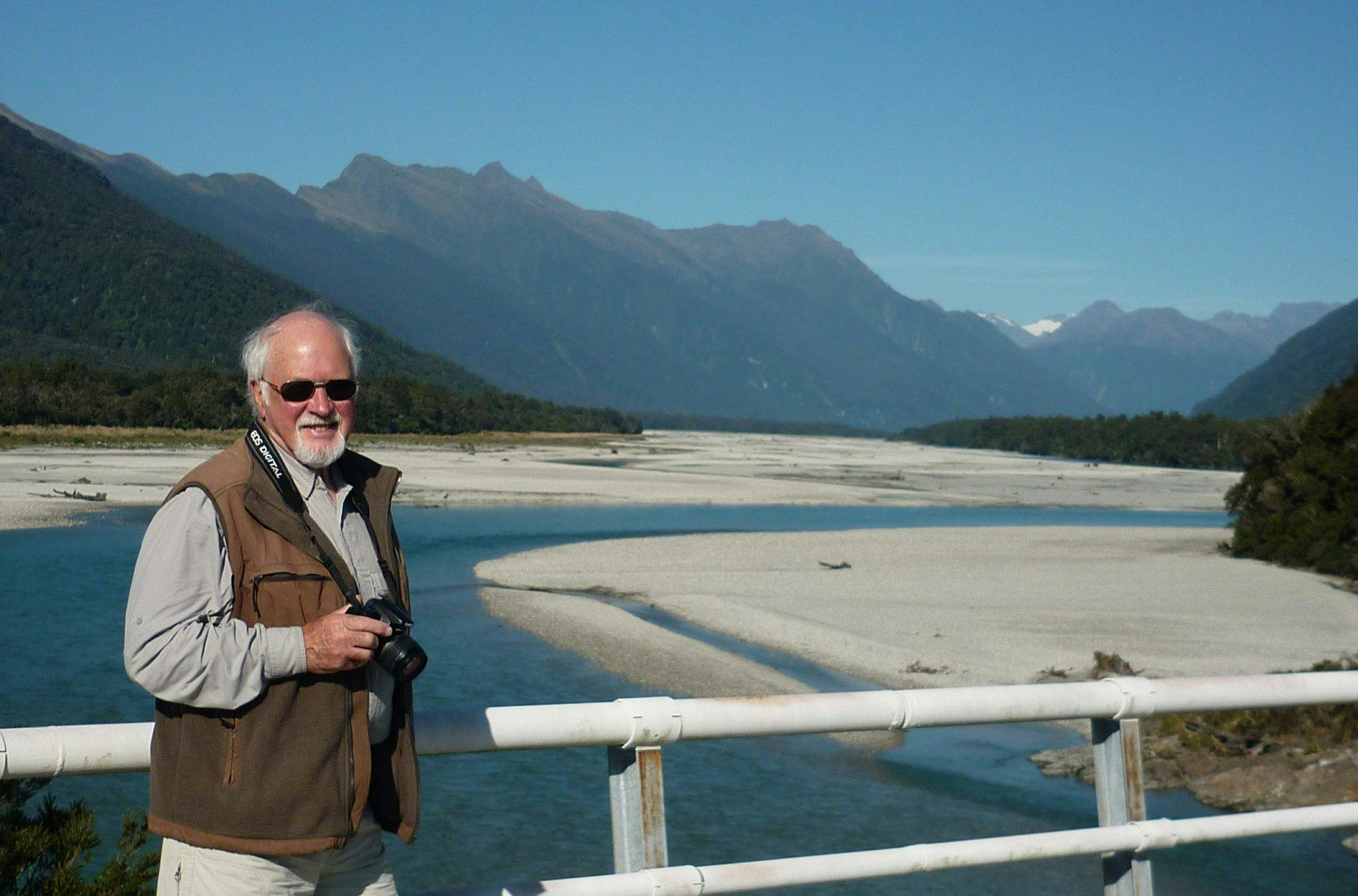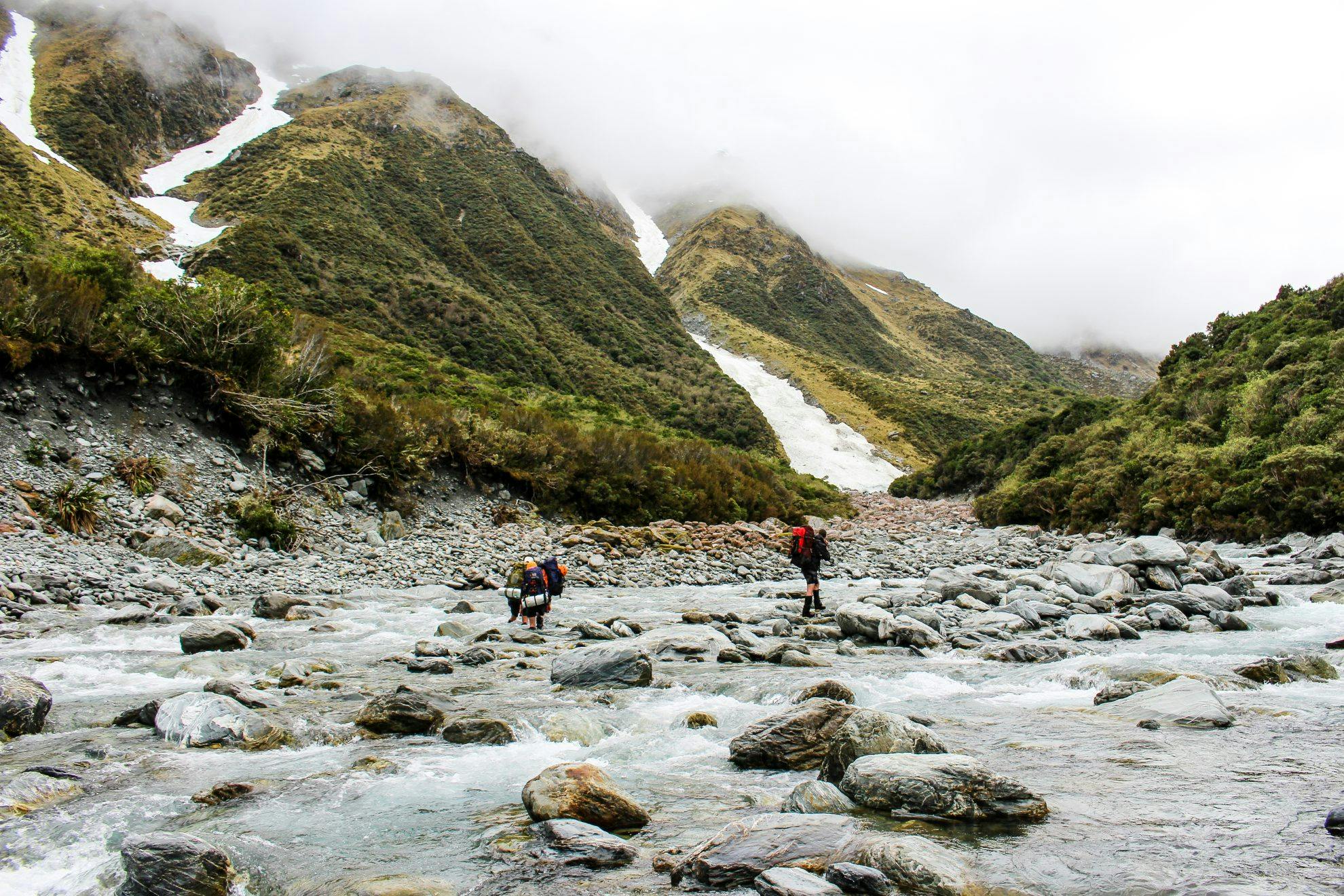A predator control research project in a wilderness area has lead to fears the status that preserves the wildest parts of the country is being eroded.
Huts, tracks, traps and a full-time team of fluro-clad rangers will be stationed in a wilderness area on the West Coast, which is meant to be free from any sign of development.
The infrastructure is part of a predator control research project in the Perth and Barlow valleys in the Adams Wilderness Area.
Under the Conservation Act, wilderness areas are the only spots in the conservation estate to be preserved as true examples of the wild. No roads, buildings, tracks, livestock or vehicles are allowed in these areas. There are 11 wilderness areas in the country, the majority of which were created following a Federated Mountain Clubs (FMC) campaign in the 1980s.
However, research in these areas is permitted if it is ‘necessary or desirable for the preservation of indigenous natural resources’.
It is this clause which has allowed for the predator control programme, which is run by Zero Invasive Predators (ZIP), in collaboration with DOC. ZIP was founded by DOC and the NEXT Foundation, with a number of high-profile investors, including Fonterra.
The project started last year and three temporary bivouacs will soon be installed in the Perth Valley, equipped with satellite internet. Staff have been regularly flown in to install traps, motion-sensor cameras and to build tracks. The project is trialling a method to create a predator-free zone in the Alps, eradicating possums and possibly rats from 12,000ha by using natural barriers, such as mountains and rivers, to prevent pests re-establishing following a 1080 poison drop. If successful, ZIP says, the ‘remove and protect’ approach would be ‘a major step towards learning how we can apply island-type eradication techniques on the mainland and at landscape scale’.
The infrastructure is meant to be temporary, but no removal date has been set.
But critics say predator control should be conducted in the least intrusive way possible and only in exceptional circumstances and the project should be undertaken in another area.
Les Molloy has been called the godfather of wilderness areas. He literally wrote the book on the protected zones (New Zealand’s Wilderness Heritage, 2007), he chaired a government advisory group on creating more of them and was a founding director of DOC. He is concerned the status of wilderness areas is being ignored.
“This cuts across the whole concept,” Malloy says. “The view was always that any pest control in a wilderness area would be aerial 1080.”
He questions why the project couldn’t be undertaken in another, similar valley.

Despite predator control being permitted, he says there has been an established precedent to avoid on-the-ground predator control in wilderness areas.
He says any project in a wilderness area should have involved a public process.
ZIP says it has been consulting with users of the valley to reduce the impacts of the research, but Federated Mountain Clubs was never told about the work, and DOC and ZIP have since apologised.
“Why on earth didn’t they run it by FMC, who have always been the main proponents of wilderness areas and their management?,” Molloy says.
FMC president Peter Wilson says he is deeply disappointed that it wasn’t consulted.
“To me, the establishment of wilderness areas is FMC’s biggest success story,” Wilson says.
“These are cherished areas, designed for self-reliant recreation. It’s something we campaigned to get established for a long time.
“My concern is these things can snowball. Are there other programmes going on in other wilderness areas? We just don’t know.”
But he believes predator control is necessary and is resigned to the project continuing.
“We have to think of the long-term of wilderness areas. If we don’t do anything they will be deserts for native species, with possum-stripped trees and no kea or whio.”
Tramper James Thornton found out about the ZIP project after he saw a job advertisement for the project. He regularly tramps in wilderness areas and says they offer an experience you can’t get anywhere else – he doesn’t even take a GPS with him in order to preserve this experience.
“It’s important we retain areas where people can meet nature on its terms,” Thornton says. “A track, even a very rough one, fundamentally alters the character of an area.
“For me, travelling through rough country that has no tracks or huts allows for a deeper connection with the landscape. To make your way through such country you have to be in tune with your surroundings. It’s this immersion which I don’t get when travelling through tracked country.”
He says he has come across pest control tracks and traps in other wilderness areas before, including in the Glaisnock, Olivine and Hooker/Landsborough.
“I am very conflicted, because I also think what ZIP is doing is fantastic. I just think these wilderness areas are so special, and relatively small, surely these operations which involve tracks and huts could be done elsewhere.”
But ZIP strategy and systems director Joseph Arand believes the impacts are justified.
“I hear and acknowledge those concerns – I value that wilderness experience, too,” Arand says. “But, if in 10 years time we’ve removed possums, maybe even rats, and made a good start on removing stoats, and if that’s then rolled out throughout the Alps and negates the need for landscape-scale 1080, to me that’s an outcome that’s worthwhile.
“At that point, potentially there would be hardly any evidence of trails. I can’t guarantee that will be the case, but it’s something that’s worth giving a go.”
DOC Western South Island operations manager Mark Davies says the Perth Valley was the most suitable area for the project as it had Alps and rivers that would limit the re-invasion of possums, high ecological values and was the option preferred by local iwi. He says the site would also minimise impacts on recreational users and was also relatively accessible to researchers. The research project is contingent on the impacts being minimal and is expected to finish at the end of next year, but could continue for longer.







